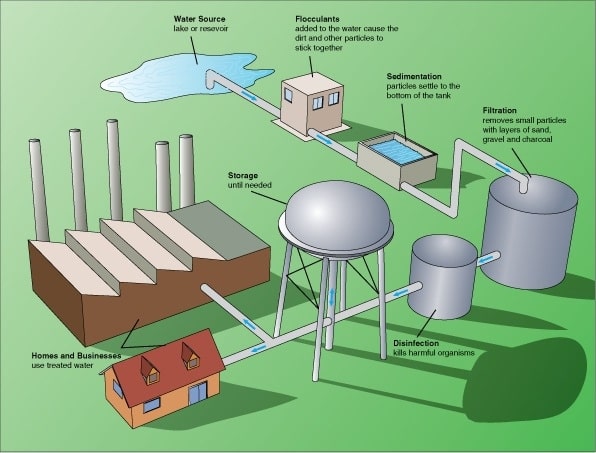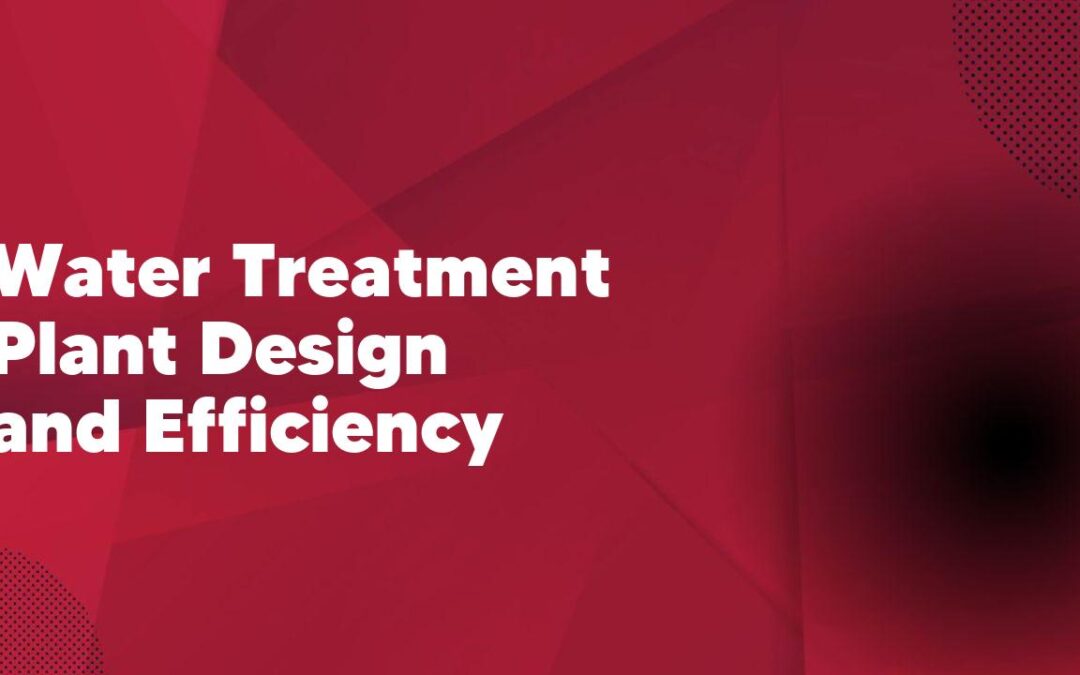Water treatment plants play a crucial role in ensuring the availability of clean and safe water for communities. Proper design and efficiency of these plants are essential to meet the increasing water demands of growing populations and to address environmental concerns. This article explores the importance of water treatment plant design and efficiency in maintaining water quality and discusses key factors to consider in improving their performance.
1. Importance of Water Treatment Plant Design in Ensuring Clean and Safe Water Supply
As a water treatment plant designer, I understand the critical importance of ensuring a clean and safe water supply for our communities. The design of a water treatment plant plays a vital role in this process, as it determines the efficiency and effectiveness of the treatment process. By carefully considering factors such as source water quality, treatment technologies, and infrastructure design, we can create a water treatment plant that meets the highest standards of water quality. It is our responsibility to design systems that not only remove contaminants but also maintain the integrity of the water supply throughout the distribution network. By implementing innovative designs and staying updated with the latest advancements in water treatment technology, we can ensure that every drop of water that reaches our taps is clean, safe, and ready for consumption.
2. Factors to Consider in Designing a Highly Efficient Water Treatment Plant

When designing a highly efficient water treatment plant, there are several important factors that need to be considered. Firstly, the quality of the water source is crucial. It is essential to assess the level of contamination and determine the appropriate treatment processes accordingly. Secondly, the plant’s capacity must be evaluated. This involves understanding the water demand of the target population and ensuring that the plant can meet these requirements efficiently. In addition, the choice of treatment technologies is vital. Depending on the specific contaminants present, various methods such as filtration, chemical treatment, and disinfection may be necessary. Lastly, the plant’s sustainability and environmental impact should be taken into account. Implementing energy-efficient technologies and ensuring responsible waste management are key to creating a highly efficient water treatment plant. By considering these factors, we can design a plant that not only effectively treats water but also minimizes the impact on the environment.
3. Innovations and Technologies for Improving Water Treatment Plant Design and Efficiency
Innovations and technologies play a vital role in improving the design and efficiency of water treatment plants. As a water treatment engineer, I have witnessed first-hand how these advancements have revolutionized the industry. One such innovation is the use of advanced membrane filtration systems, which offer superior removal of contaminants and provide a more effective treatment process. Additionally, the integration of automation and digital monitoring systems has significantly improved the efficiency of water treatment plants. Real-time data analysis and remote control capabilities have allowed us to identify and address issues promptly, resulting in fewer disruptions and delays. These innovations have not only enhanced the overall performance of water treatment plants but also ensured the delivery of safe and clean water to communities in a more sustainable and cost-efficient manner.
4. Key Challenges and Solutions in Achieving Optimal Performance of Water Treatment Plants
As a water treatment plant operator, I face several key challenges in achieving optimal performance. One major challenge is ensuring the consistent supply of clean and safe drinking water to meet the growing demand of the population. This requires efficient and reliable treatment processes that can handle varying water quality and quantity. Additionally, maintaining and operating the complex equipment and infrastructure of the plant can be daunting. Regular maintenance and upgrades are necessary to prevent breakdowns and ensure smooth operations. Another challenge is the growing concern over emerging contaminants, such as pharmaceuticals and microplastics, in the water supply. Implementing advanced treatment technologies and monitoring systems are crucial to address this issue. Overall, by adopting innovative solutions, conducting thorough research and staying up-to-date with industry standards, we can overcome these challenges and achieve optimal performance in water treatment plants.
5. The Role of Automation and Digitalization in Enhancing Water Treatment Plant Design and Efficiency
As a water treatment engineer, I have witnessed firsthand how automation and digitalization have revolutionized the design and efficiency of water treatment plants. With the advancements in technology, we can now use smart sensors and real-time data analysis to monitor water quality parameters and optimize the treatment processes. Automation has not only improved the accuracy and reliability of the treatment processes but has also reduced the risk of human error. Additionally, digitalization has allowed for better remote monitoring and control, enabling us to address any issues promptly and efficiently. Overall, the integration of automation and digitalization has greatly enhanced the effectiveness and sustainability of water treatment plants, ensuring access to clean and safe water for communities.
6. Evaluating the Environmental and Economic Impact of Water Treatment Plant Design Choices
In order to ensure the sustainability and effectiveness of water treatment plants, it is essential to evaluate the environmental and economic impact of various design choices. As a water treatment engineer, I believe that implementing efficient and innovative technologies can significantly reduce the environmental footprint of these plants. By incorporating advanced filtration systems, such as membrane filtration or reverse osmosis, we can minimize the use of chemicals and energy consumption. This not only improves the quality of treated water but also reduces the release of harmful substances into the environment. Moreover, considering the economic aspect of these design choices is vital. While initial investments may be higher, the long-term savings in operational costs and energy efficiency make these alternatives highly valuable. Therefore, as a responsible engineer, I strive to prioritize sustainability and economic viability in designing water treatment plants.
Conclusion
In conclusion, designing and improving the efficiency of water treatment plants is crucial for ensuring access to clean and safe drinking water for communities around the world. By implementing advanced treatment technologies, optimizing processes, and utilizing renewable energy sources, water treatment plants can minimize their environmental footprint and reduce operating costs. It is imperative for governments and organizations to prioritize investments in research and development to continually improve the design and efficiency of water treatment plants.
1. How does a water treatment plant work?
A water treatment plant works by removing impurities and contaminants from raw water sources through a series of physical, chemical, and biological processes. These processes typically include coagulation, sedimentation, filtration, disinfection, and sometimes advanced processes like membrane filtration or ion exchange.
2. What factors are considered when designing a water treatment plant?
Several factors are considered when designing a water treatment plant, including the quality of the raw water source, the desired level of treatment, the population served, available space, budget, and regulatory requirements. Each of these factors influences the selection of treatment processes, equipment, and overall plant design.
3. How can a water treatment plant improve its efficiency?
A water treatment plant can improve its efficiency by implementing various measures. These may include optimizing the treatment processes to minimize energy consumption, improving the efficiency of chemical dosing and disinfection systems, reducing water losses through leak detection and repair programs, and implementing advanced monitoring and control systems to optimize plant operation.
4. What are the consequences of an inefficient water treatment plant?
An inefficient water treatment plant can have several consequences. It may lead to inadequate treatment of contaminants, resulting in poor water quality and potential health risks. It can also lead to excessive energy consumption, increased operating costs, and environmental impacts. Additionally, an inefficient plant may struggle to meet the regulatory requirements and fail to provide reliable water supply to the population served.
5. What are some common challenges in water treatment plant design?
Designing a water treatment plant can face several challenges, including site constraints, selecting the most appropriate treatment processes, ensuring robustness against variations in raw water quality, considering future population growth, meeting regulatory requirements, and optimizing the design for both capital and operating costs. It requires careful planning, analysis, and collaboration with experts in the field.
6. How can a water treatment plant ensure the safety of its workers and the public?
A water treatment plant can ensure the safety of its workers and the public by implementing proper safety protocols, conducting regular training programs, and following relevant occupational health and safety guidelines. It is important to provide necessary personal protective equipment, regularly maintain equipment and infrastructure, monitor water quality parameters, and have emergency response plans
